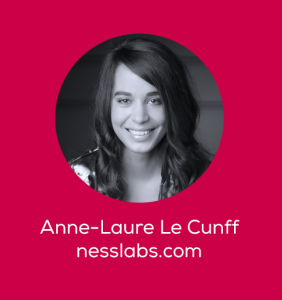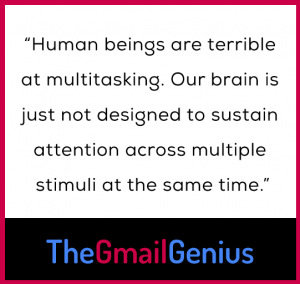How I Email: Anne-Laure Le Cunff, Founder, Ness Labs
Email is a non-negotiable part of everyday life. For some, it’s an unruly time suck, but enlightened email users have systems to ensure they’re not a slave to the inbox. We’re asking smart thinkers to give us a peek inside their inboxes, share tips, ideas, gripes, and everything in between.
Anne-Laure Le Cunff is an ex-Googler and the founder of Ness Labs, a platform offering content, coaching, and a support community to knowledge workers who want to be their most productive and creative. She studies neuroscience at King’s College London and is a fan of Zapier.
 What’s your daily approach to email?
What’s your daily approach to email?
Parkinson’s law suggests that “work expands so as to fill the time available for its completion.” So I only check my email once a day. That is the single most important routine I have developed for myself.
I know many people are fans of the “deal with it or delete it” method where you keep your email open and decide what to do with an incoming email as soon as you receive it, but I don’t want to spend my whole day in my inbox. So I block one hour, and I go through the email I received.
If an email requires more work than a quick reply—for instance, preparing for an interview, or doing some research—I add it to my to-do list. If I don’t manage to review everything, that’s completely fine. To me, getting to Inbox Zero is not a goal in and of itself.
In my newsletter, I always encourage readers to reply back to say hello. These are a pleasure to read. However, I’m also ruthless with bad cold emails, the ones that feel spammy and generic. I always mark these as junk email and block the sender.
What is your favorite email tool?
It feels like it’s cheating, but Zapier is a life-changing tool to manage your inbox.
You can automatically turn specific emails into tasks, have email receipts bypass your inbox to go straight to a spreadsheet, automatically send a custom welcome email to people purchasing one of your products.
Every workflow is created by connecting Gmail to one of the thousands of services offering Zapier automations. You can connect it to your favorite to-do list app, your file manager, your calendar, your contact list. Seriously, it’s basically one tool to rule them all.
Based on all you know about neuroscience, what’s your best advice for dealing with inbox overwhelm?
Human beings are terrible at multitasking. Our brain is just not designed to sustain attention across multiple stimuli at the same time.
Beside the fact that many people receive too many emails, inbox overwhelm is partly due to the fact that we try to deal with our emails in the middle of other tasks.
In order to have a calmer relationship with our inbox, we should be mindful and intentional of the time we spend dealing with incoming emails. That means blocking “focused inbox sessions” that are solely dedicated to emails.
 When you work on a project, only work on that project. When you manage your email, focus on managing your email. When you take a break, take a proper one.
When you work on a project, only work on that project. When you manage your email, focus on managing your email. When you take a break, take a proper one.
Share a story about a particularly memorable email.
My most life-changing email was probably when I hit “send” on the very first edition of my newsletter. I didn’t know it at the time, but launching the newsletter was one of the best decisions I made in my life.
It has allowed me to connect with like-minded people from all around the world, to learn about topics I would have never thought to explore, and to build a sustainable business.
Many people think of email as an antiquated form of communication; something we use out of habit, and not because we actually enjoy it. But email can be an incredible source of joy when it’s used with intention.